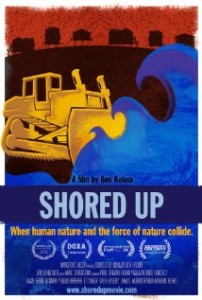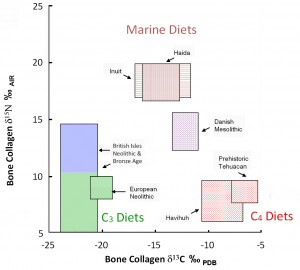Shored Up is a documentary that delves into the impact that climate change is having on sea levels and therefore beachfront property that is close to the shoreline. Included in the documentary are interviews with scientists, activists, lobbyists, and others with opinions on beach erosion and its effect on homes. The focus of the documentary is on Long Beach Island, an island off the coast of New Jersey that is 18 miles long and about 400 meters (around a quarter of a mile) wide.
On the island in question, beaches are being eroded by rising sea levels and by general ocean activity (the movement of waves and such). Owners of expensive waterfront property are having the beaches in front of their property “replenished”, which means essentially that extra sand is being dumped in front of their houses to replace that lost to erosion. This is all being done at the expense of taxpayers through the federal, state, and local governments (although most of the funds are being raised federally). This “beach replenishment” has sparked a wide-ranging debate concerning whether it is a good idea or not. Some feel that it is, some feel that federal funds are being squandered, and some feel that “beach replenishment” is not an effective long-term solution due to the fact that rising sea levels projected by scientists over the next century (over a meter) will flood over the houses that are being temporarily protected anyways.
I agreed with the overall argument of the movie that rising sea levels will eventually destroy any economic or residential development close to the shoreline and that we should therefore think more carefully about where we build. However, I noticed that mentions of “global warming” were scarce and that talk of greenhouse gases generated by human activity was lacking altogether, although this would be a logical explanation to give for the rising sea levels. I believe that this was done to avoid alienating those who deny the existence of “global warming” and still appeal to them. Mention of recent temperature increase was given, but this was not attributed to “global warming”. I personally believe that deniers of global warming would much more easily object to “global warming” itself than an abject statement of temperature change, meaning that the film would still be able to appeal to those non-believers. I don’t believe in the use of these tactics and I think that the full scientific argument should have been presented, not parts of it. After all, making one’s argument more “presentable” is not going to have a real impact on our nation’s anti-scientific political climate, which is at the heart of the problem.
The relation between the climate change described in the documentary to archaeology was implicit yet relatively simple. As long as this erosion of the beaches due to sea level rise continues, archaeological sites that formerly existed under those beaches will be destroyed. In addition, the “beach replenishment” itself may be destroying archaeological remains, as heavy plows which could damage those records are being used to spread the new sand. In other words, the only way to save archaeological sites on the coast is to find a long-term solution to the erosion problem that would most likely involve combating rising sea levels and global warming.
Sources:
http://en.wikipedia.org/wiki/Shored_Up#mediaviewer/File:Shored_Up_poster.jpg





